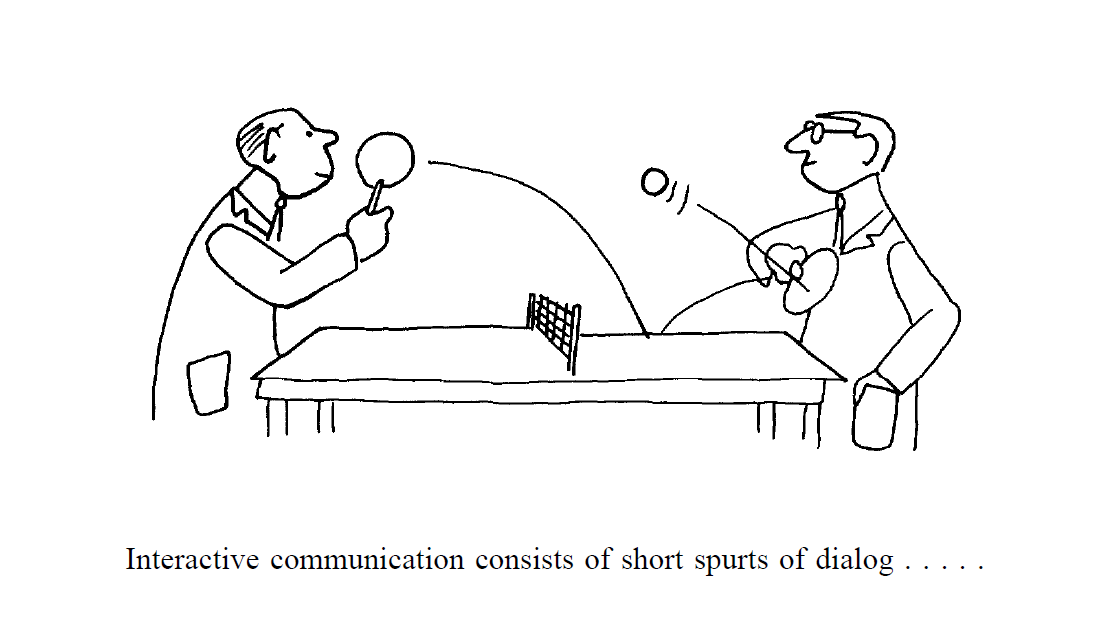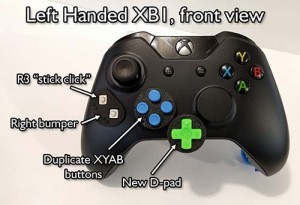Game interfaces, and game mechanics, have long been sites where hegemonic models of physical, sensory, and cognitive functioning are expressed and enacted—spaces where normative machinic subjectivities are constructed. But recently, they have also become sites where such hegemonic models are contested, as aspiring players demand recognition for their own individual and collectivized bodies. Consequently, a new class consciousness emerges around game interfaces, as they undergo a test of their compatibility with a range of bodies previously excluded from consideration. For those players whose bodies do not mesh seamlessly with standardized game interfaces, these machines are experienced as exclusionary, requiring players to actively reshape and modify in order to function effectively. As Stephanie Boluk and Patrick LeMieux suggest, the “screens, interfaces, and protocols” of games “can be inaccessible and disabling for many players.”
In “The Game Player’s Duty: The User as an Assemblage of the Ports,” German media theorist Claus Pias explores the relationship between game players and game machines. Attempting to move beyond the cybernetic formulation of humans merging harmoniously with computers, Pias suggests instead that humans become components of the machines they play with through a process of machinic subjectification. By agreeing to play a given game, the player takes on the duty of responding to the machine’s prompts; any dereliction of this duty is “punished with a symbolic death.” As Pias explains:
A game program is […] not only a set of instructions, a kind of law code for the world of the particular game, that I have a duty to follow when I am in the company of computers, but at the same time also a police agent that precisely monitors my actions.”
In order for this arrangement to exist in the first place, however, the machine and human must be acclimated to each other, so that information may pass smoothly and efficiently between the two—the commands that the player must execute in order to demonstrate their fealty to the order of the game have to be received, via sense organs operationalized as information-reception channels, and, in order to fulfill their obligation to the software, the player enters commands on an input device. Describing this mutual legibility in sensory terms, Pias initially assigns primacy to the human rather than the machine body, arguing that “there is no (inter)action without visual or haptic procedures—the computer has to be ‘humanized.’” But he quickly notes that the human, too, has to be acclimated to the machine, with a “cleaving together (or suturing) of human bodies and machine logic […] necessary for the human to become ‘machine shaped.’” Games, for Pias, are ultimately “a test of this compatibility” between humans and machines; humans pass this test when they “acquire the ability to function as components of the machine.”

But what if the player’s body cannot pass this test? What if the player fails to effectively receive the commands issued by the machine, and cannot send the appropriate commands back to the machine? What if, in other words, the cybernetic feedback loop between player body and machine system fails to close? The punishment for dereliction of duty is symbolic death in the game world—a disciplinary technique that will encourage the player to adapt themselves more perfectly to its rule systems. This assumes, problematically, that the player’s body is capable of such an adaptation on its own—that the machine was initially designed in such a way that it would not overwhelm or “overload” the body with commands that it was simply not equipped to respond to coherently. While arguing for the malleability of the human body to the machine, Pias assumes that the human shaped by the machine is stable and constant across the range of different bodies, not accounting for the multitude of differences between player bodies, and taking for granted a universal capacity of humans to adapt themselves to game machines. For those bodies that are incompatible with the game interface, it is experienced as an exclusionary site: the game is a test of compatibility that they fail, in spite of their willingness to become machinic subjects. The game’s infrastructures of possibility are simply incompatible with their bodies.

The Biopolitics of Game Interfacing
While videogames come neatly packaged in ideologies of hedonism and escapism, the critical tradition Pias builds upon situates them as a way to think through human-machine relationships more broadly. Games are always already political, serving as a means of acclimating their players to the structures, logics, and bodily habits required for laboring with machines, whether in the case of mechanical arcade games—as Erkki Huhtamo argues in “Slots of Fun, Slots of Trouble”—or with digital games, as Lev Manovich suggests in “The Labor of Perception” (a point underscored and deepened by Samuel Tobin in an earlier issue of this journal). More specifically, game interfaces—as sites where humans rub up against machines—fill a biopolitical function, allowing for the capture of data about player bodies, quantifying at a micro scale the temporalities of human sensory and motor processes, and harnessing the rhythms of machinic interaction. Game interfaces help make player bodies and bodily processes productive in a neoliberal, late capitalist order that depends on the circulation of data through information-processing subjects. Videogames, then, depend on and further the biopolitical project of making life and lives statistical.
Moreover, videogames exist within a longer tradition in industrial design that produces and articulates normative models of bodily functioning through the intense study of the way bodies interact with objects—a Taylorist process of attempting to generate an efficient feeding of human energy into machines. The positivist programs of study in this tradition (ergonomics, human factors, and user-centered design, for example) emerged in the context of industrial and postindustrial capitalism, and depend on the solicitation and aggregation of information about the bodies of technology users, so that the design of objects may be refined to operate more harmoniously with humans (Edward Tenner fantastically details the follies of this approach).
Specific to games, this process entails identifying an ideal-typical user, and crafting an interface that suits their body, as it is revealed through iterative design and testing. For example, in reconceptualizing the design of their console controller for the release of the Xbox One, Microsoft reportedly mocked up hundreds of different prototypes, experimenting with different shapes, sizes, and button configurations, while spending over $100M on development and testing. Of paramount concern was ensuring that the final design would mesh seamlessly with the so-called “golden hands”—Microsoft’s internal shorthand for a class of “core” game players who were the primary audience for the redesign. Crucially, Microsoft did not take aim at the normal, or seek to determine the statistically-average hands of game players, but instead turned to those “hardcore gamers who end up understanding the minutiae of the controllers better than the people who designed them.” The interface embodied a marketing strategy, where Microsoft hoped its controller would appeal to gamers in the bourgeoning e-sports industry; the design of the Xbox One controller expressed a fantasy of its desired subject.

But not all hands can be golden. Problematically, the outcomes of such design processes are experienced by many gamers as limiting and disabling, as game interfaces, both at the level of hardware and software, encode normative models of bodily, sensory, and cognitive functioning, while conversely defining those who fail to meet the expectations of the machine. The body of the gamer, as depicted in industry marketing and promotional materials, is a normate one following Rosemarie Garland-Thomson, complete with what Mark Paterson has termed a “normate sensorium” that situates the non-normate, impaired sensorium as its other. The assumption of this normate body is not merely representational: it is encoded in the design of game controllers, in audio and visual presentation of game data, and in the navigational affordances of game systems, the result of a “normate template” that silently informs the practice of interface design.
As constructivist theorists of disability like Garland-Thomson argue, disability is not something that bodies have inherently, but rather, something that they acquire through interfacing with environments hard-coded with ableist assumptions. All bodies have limits, but the limits of “disabled” bodies present themselves far more spectacularly and forcibly, because infrastructures are not configured to accommodate them. Infrastructures, rather than bodies, are disabling. Informed by such constructivist theories, Boluk and LeMieux push on this point in their new book Metagaming, situating game interfaces as sites for creative and transformational experimentation that prompt reflection on the arbitrariness of standard modes of play. The “standard way to play,” Boluk and LeMieux argue, exists as “a matter of cultural and historical production—a not-so-lusory attitude toward videogames that privileges a normative, or standardized, body.” Through their analysis of “metagames” like Mary Flanagan’s [giantJoystick] and blind playthroughs of The Legend of Zelda: Ocarina of Time, they suggest that games hold the potential to “reveal the invisible rules guiding play.” Disability becomes infrastructural and social, rather than individual—and games are socially produced infrastructures within which play takes place, enabling some bodies, while disabling others.
Contesting the Interface
In response to these hegemonic and normative interfaces, there has been an increasing push by activist communities of disabled gamers to point out the ways in which game interfaces embody and express ableist norms of bodily, sensory, and cognitive functioning. AbleGamers, a nonprofit founded by Mark Barlet in 2004, advocates on behalf of gamers with disabilities, providing detailed guidelines for developers so that they can make their games accessible to a wider range of player bodies. The AbleGamers Includification project (2013) presents “a practical guide to game accessibility” for developers, including accessibility checklists for consoles and PCs, with accessibility broken down into the categories of mobility, visual, and hearing. The guide is impressive in scope and method, providing specific examples of how standard game interfaces are experienced as limiting to players with particular conditions, and describing, for example, how a gamer with Muscular Dystrophy will have different accessibility needs than one with Cerebral Palsy, with the former having limited range of motion, but better precision control, and the latter having greater range of motion, but less precision control. Building reconfigurability and remappability options into games, the document suggests, will help the gamer find their own personalized “mobility sweetspot.” The guide credits developers who have already worked to improve the accessibility of their games, pointing to certain games as exemplars for other developers to emulate (Dragon Age: Origins earns high marks, though they concede that it too will prove exclusionary for some gamers).
What emerges from this guide is a rhetorical framework for articulating different player bodies in response to standard controller and interface configurations—a request to make disabled players’ bodies legible to the designers who configure game machines, in hopes that the interface will become more malleable, adaptable, and accessible. In the process of critiquing the failures of game interfaces to accommodate the particulars of their bodies, disabled gamers articulate themselves as biopolitical subjects, describing the microphysics of their bodily interfacing with particular games, and telling stories of how they experience certain interfaces as disabling.

AbleGamers effectively flips Pias’s script: it is not the player who fails the test of their compatibility with the game machine, but rather, the machine that fails the test of its compatibility with the player. AbleGamers—as a platform for the aggregation of disabled gamers’ experiences interfacing their specific bodies with specific games—exposes the normative, ableist assumptions encoded in game design at the micro scale. The interface now becomes a battleground for representation at the material—rather than symbolic—level, with gamers pressing on developers to bake accessibility into their products. As David Mitchell and Sharon Snyder argue in The Biopolitics of Disability, “disability subjectivities are not just characterized by socially imposed restrictions, but, in fact, productively create new forms of embodied knowledge and collective consciousness.”
In service of imparting such subjectivities, Barlet and Spohn provide a list of developer exercises throughout the guide intended to simulate the embodied experience of navigating a game or computational system with different motor, mobility, and sensory affordances. And while Boluk and LeMieux, building upon Alison Kafer’s critique of disability simulation exercises, rightly point to the limits of such disability-emulation metagames, the push to make developers aware—at the material and psychotechnical level—of how interfaces are encountered by disabled gamers holds the potential to make at least incremental changes in the practice of design.
Barlet and Spohn also catalog the experiences of disabled gamers who have taken it upon themselves to modify and hack their interfaces, whether through third-party software mods that adapt a game’s audiovisual display to suit their needs, or by reworking controllers so that they allow for single-handed gaming (such as those designed by Ben Heckendorn). These ad hoc techniques that disabled gamers use in their attempts to make do with the interfaces provided to them by the industry showcase the grassroots creativity and ingenuity of those marginalized by the normate template, while also implying the more radical solutions that might form formalized partnerships between developers and those in disabled communities. Underlying these examples is the message that videogames consistently fail the test of their compatibility with player bodies in ways unimaginable for and invisible to their creators.
The Game-Maker’s Duty
Game interfaces have always been normative—they have always brought with them ideas about the proper relationship between player bodies and machines, about which bodies can and should be allowed to derive pleasure from games. But they were not always recognized as such. Now that game interfaces have been reconceptualized as sites of struggle and contestation, the crucial question becomes one of tactics: how should those arguing in favor of more inclusive interfaces situate their argument? If interfaces are expressions of power, on what grounds can that power be successfully challenged, opposed, and productively reappropriated?
In making their appeal, AbleGamers assures game developers that implementing accessibility features will leave games’ core functionality intact: the guide opens with a single-page frequently asked question section titled “Let’s get a few things out of the way” that addresses common concerns raised by developers when considering adding accessibility options. The FAQ page explains that, no, adding accessibility options will not break achievements; that most accessibility features are “cheap and easy” to implement. But most crucially, the FAQ sheet situates disabled gamers as a market that can be profitably catered to by developers: in response to the question, “how do I justify the cost of developing features for a fragment of my potential audience?” the FAQ touts the “over 33 million disabled gamers in the United States alone” and over 1 billion people worldwide with “some form of a disability.” It concludes, based on the sheer size of the audience, that “the potential upside […] is well worth the cost for most games.”

Includification presents a neat neoliberal solution to the problem of game accessibility—a bloodless revolution where disabled gamers’ access rights merge harmoniously with the interests both of game publishers and other gamers, with massive increases in accessibility promising to be accompanied by a corresponding rise in revenue. The guide repeatedly situates accessibility as a pact with publishers: an inset against the backdrop of a screenshot from Stardock’s Demigod states that there are 63 million Americans with disabilities, telling developers “that’s a lot of your customers.” The Includification guide presents a framework for transforming nonproductive bodies—bodies that exist outside the loop of machinic consumer subjectivity—into productive subjects that are incorporated into a circuit of human-machine interaction that exists inside of a broader network of capitalist subjectification.
If games are a test of the compatibility between machines and humans, this test itself exists a level below another more all-consuming one: the test of the player’s compatibility with the fundamental logic of market capitalism, where rights are accorded to people not based on any inalienable notion of shared human dignity, but rather, based on the individual’s ability to articulate their value in market terms. In this framework, where disabled gamers are worthy of access and accommodation chiefly because they represent undermobilized capital, it is also possible for gamers with disabilities to fail the compatibility test, if they have a condition deemed too rare to justify the price of inclusive design. AbleGamers makes a nice end run around this by suggesting that designers can solve the bulk of accommodation problems by simply making games as user-configurable as possible, and arguing that so-called “Level One” and “Level Two” accessibility can be implemented for a fairly low cost. In pressing their case, however, they downplay the possibility that developers will balk at any accessibility implementation costs that rise above zero, repeatedly touting the ease of increasing configurability options. Even while conceding that “game accessibility will not always be a profitable endeavor,” Barlet and Spohn revert back to the neoliberal position that rights ought to be allocated to individuals based primarily on their purchasing power, suggesting in the following sentence that “there are 100 million gamers with disabilities worldwide, many of whom have disposable cash for things like entertainment and who shy away from video games because of the possibility of being literally unable to play the game they just bought.”
As with accessibility in other infrastructures, game accessibility presents a complex problem, owing especially to the heterogeneity and multiplicity of “disability” as a category, and to the corresponding variety of material accommodations necessary to accommodate the range of potential players. In calling for games to be made more adequate to the needs of gamers who fall outside the borders of the normate template, AbleGamers expresses the ways in which games too often fail their players, offering pragmatic remedies to the problems faced by many disabled gamers. However, in couching their appeal in the rhetoric of the market, they tacitly concede that the obligation of developers to disabled gamers hinges on the aggregate purchasing power that can be mobilized by inclusive design. Appeals to the ethical duty of game developers to design with accessibility in mind may be met with success on an individual basis, but it may be wildly naïve and optimistic to expect the industry at large to expend resources solely on this basis. Yet another approach, explored by Powers, Nguyen, and Frieden, would be to press on the legal obligation of developers and publishers to build accessibility into their products, building on established rights won in other commercial spheres. Regardless of the strategy pursued, the struggle over game interfaces will remain—to merge Pias with Boluk and LeMieux—an ongoing metagame, with the articulation of disabled gamers as both machinic and economic subjects as its outcome.
—
Featured image “hand + visualizer” by Hope For Gorilla @ Flickr, CC BY-NC.
—
David Parisi, PhD is an Associate Professor of Emerging Media at the College of Charleston. He received his PhD from NYU’s Department of Media, Culture, and Communication. He has written extensively on the relationship between videogames and the body, including most recently Shocking Grasps: An Archaeology of Electrotactile Game Mechanics (Game Studies, 2013) and A Counterrevolution in the Hands: The Console Controller as an Ergonomic Branding Mechanism (Journal of Games Criticism, 2015). His book Archaeologies of Touch: Interfacing with Haptics from Electricity to Computing will be published with University of Minnesota Press in early 2018, and his coedited themed issue on Haptic Media Studies is forthcoming in New Media & Society later in 2017.





